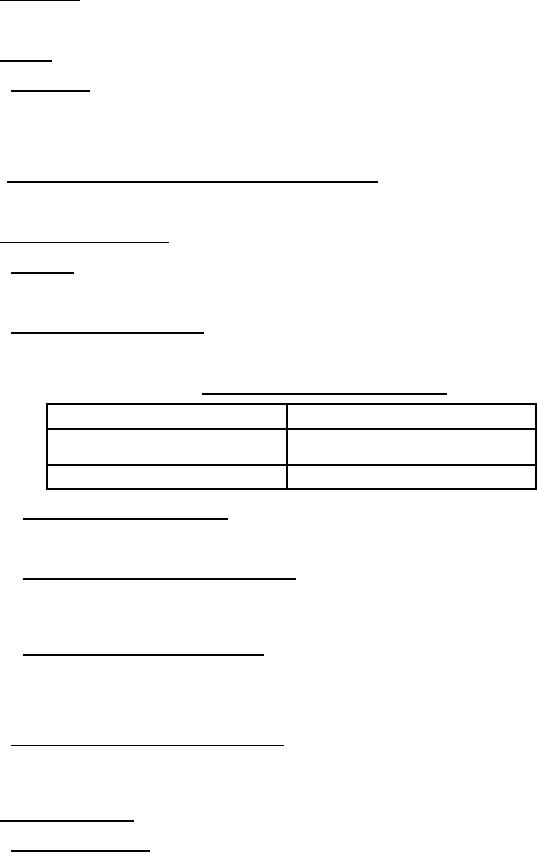
MIL-PRF-24790A (SH)
3. REQUIREMENTS
3.1 Qualification. Packing material furnished under this specification shall be products that are authorized
by the qualifying activity for listing on the applicable qualified products list before contract award (see 4.3 and
6.3).
3.2 Material.
3.2.1 Composition. The packing material ingredients, shape and construction shall conform to that of the
sample submitted for qualification inspection. For braided packing, except for 1/8-inch and 3/16-inch sizes, the
material shall be braided to a diagonal interlocking through body-to-surface construction (as opposed to braid-over-
braid or square-braid construction) to product a dense packing with good dimensional stability. The 1/8-inch and
3/16-inch braided packings shall be square plait-braided.
3.2.2 Recycled, recovered, or environmentally preferable materials. Recycled, recovered, or environmentally
preferable materials should be used to the maximum extent possible provided that the material meets or exceeds
the operational and maintenance requirements, and promotes economically advantageous life cycle costs.
3.3 Performance characteristics.
3.3.1 Flexibility. The packing shall be flexible enough to be formed readily into coils to fit a rod with a
diameter which is equal to five times the size of the packing. Any sign of voids or separations between the rod and
the packing shall be cause for disqualification (see 4.6.1 and 6.7).
3.3.2 Packing and fluid compatibility. To qualify for each specific type and class (see 1.2), the packing
material shall be immersed in the fluids specified in table I and shall meet the requirements of 3.3.2.1 through
3.3.2.3.
TABLE I. Immersion fluids for compatibility tests.
Type
Fluid
Fresh water and Seawater, and
Type I, Class A
Boiler feedwater
Type II, Class A
Fresh water
3.3.2.1 Flexibility and fluid compatibility. Fluid media effect on flexibility shall be determined after fluid
immersion (see 4.6.2.1). Any signs of voids or separations between the rod and the packing shall be cause for
disqualification of a material for the class that includes the fluid which caused the change.
3.3.2.2 Dimensional stability and fluid compatibility. Fluid media effect on dimensional stability shall be
determined by comparing cross-sectional dimensions of a sample of 1/2-inch square packing after fluid immersion
with packing dimensions before immersion (see 4.6.2.2). A 5 percent or greater change from the original
dimensions shall be cause for disqualification of a material for use in the fluid which caused the change.
3.3.2.3 Tensile strength and fluid compatibility. Fluid media effect on tensile strength shall be determined
by comparing tensile strength measurements before and after fluid immersion (see 4.6.2.3). Post immersion tensile
strength measurements shall be no less than 95 percent of pre-immersion tensile strength measurements. A tensile
strength which is less than 95 percent of the tensile strength of the reference (pre-immersion) material shall be
cause for disqualification of material for use in the fluid which caused the change.
3.3.3 Thermogravimetric analyzer (TGA) analysis. Thermogravimetric analyses shall be conducted to
determine weight loss as a function of heat. Material weight loss as a function of heat shall be recorded and
compared with original (pre-heating) material measurements. If weight loss exceeds 10 percent at a temperature
which is less than the applicable temperature specified in 1.2, the material shall be disqualified (see 4.6.3).
3.4 Detrimental materials.
3.4.1 Halogen concentration. Packing materials, Type I, Class A and Type II, Class A, shall be tested for
halogen concentration (that is, the sum of total bromide, total chloride, and total fluoride ions) (see 4.6.4.1). The
following limits shall apply:
(a)
Either total halogens shall not exceed 250 parts per million (ppm), or
3
For Parts Inquires call Parts Hangar, Inc (727) 493-0744
© Copyright 2015 Integrated Publishing, Inc.
A Service Disabled Veteran Owned Small Business